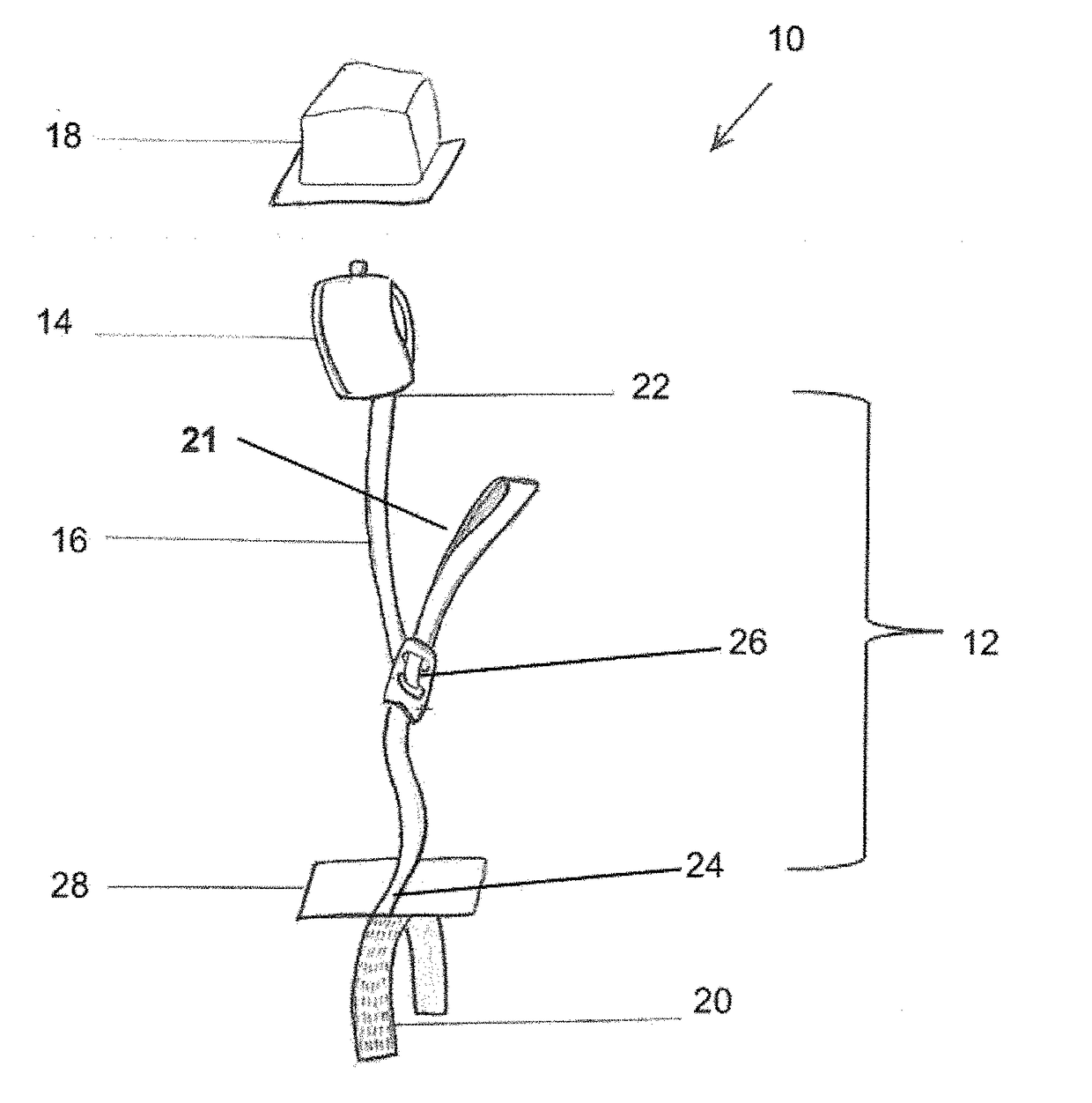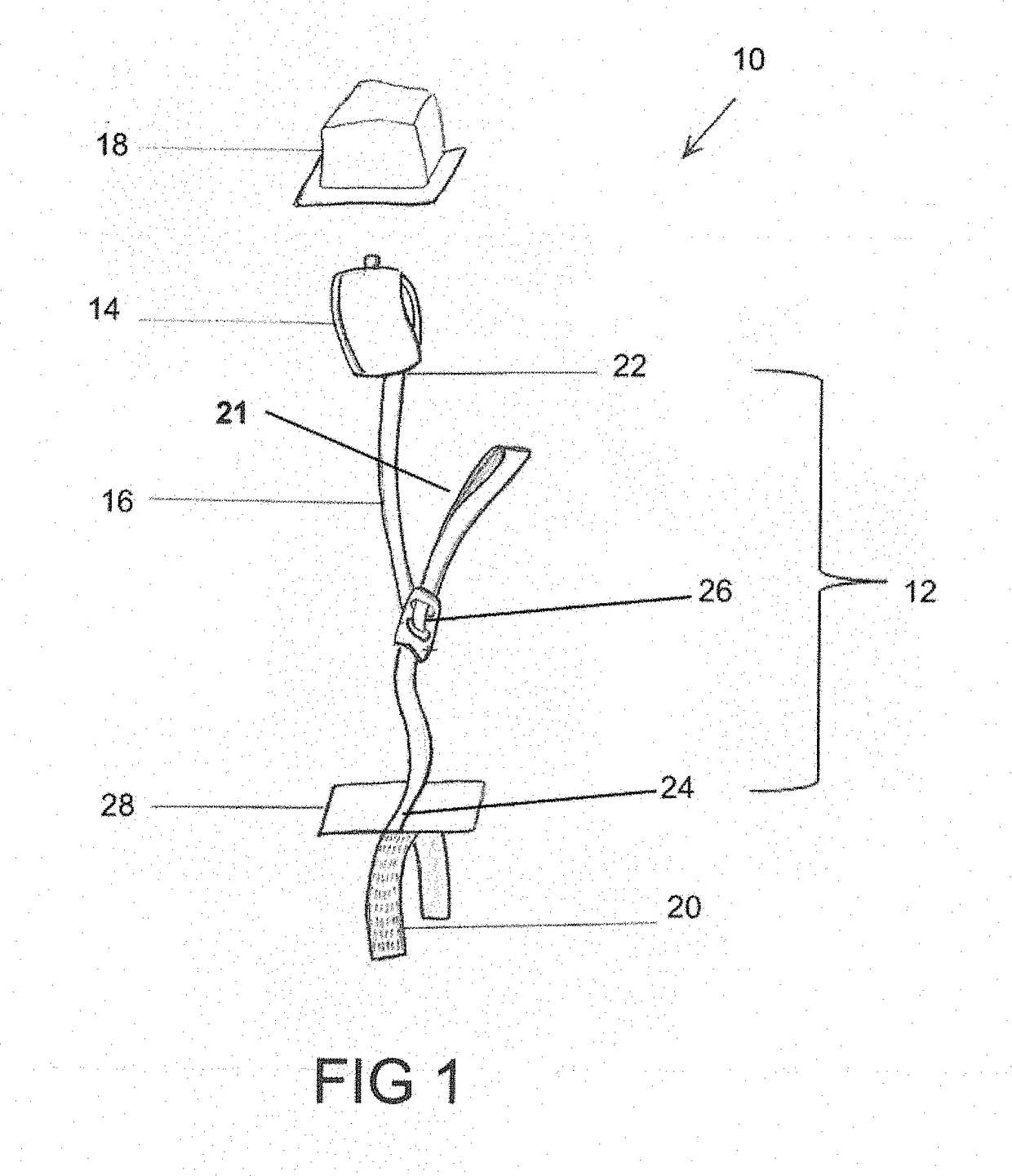Limb restraint
a technology for limbs and legs, applied in medical science, ambulance services, medical transportation, etc., can solve the problems of limiting the function of stretchers, limiting the use of limb restraint devices used in patient care, and time-consuming task of locating them
- Summary
- Abstract
- Description
- Claims
- Application Information
AI Technical Summary
Benefits of technology
Problems solved by technology
Method used
Image
Examples
Embodiment Construction
[0046]Referring to FIGS. 1-7, the numeral 10 generally designates a restraint system according to an embodiment of the present disclosure. As best seen in FIG. 1, restraint system 10 includes a restraint assembly 12, which includes a restraint cuff 14 (such as a wrist cuff or leg cuff), a tether 16, and a cover 18, and an anchor 20 to mount restraint assembly 12 to a person support apparatus, as noted, such as a patient support apparatus, including a cot, a stretcher, a bed, a chair, such as a wheelchair or a stair chair, or other patient transport apparatuses, including a back board as noted below. As will be more fully described below, cover 18 encloses cuff 14 and tether 16 (and optionally an adjustment mechanism) to protect them from bodily fluids and / or dirt and debris.
[0047]Tether 16 is coupled on one end to cuff 14, as noted by an optional coupler 22, and coupled at its other end to anchor 20, which as noted is configured to mount restraint assembly 12 to a person support app...
PUM
 Login to View More
Login to View More Abstract
Description
Claims
Application Information
 Login to View More
Login to View More - R&D
- Intellectual Property
- Life Sciences
- Materials
- Tech Scout
- Unparalleled Data Quality
- Higher Quality Content
- 60% Fewer Hallucinations
Browse by: Latest US Patents, China's latest patents, Technical Efficacy Thesaurus, Application Domain, Technology Topic, Popular Technical Reports.
© 2025 PatSnap. All rights reserved.Legal|Privacy policy|Modern Slavery Act Transparency Statement|Sitemap|About US| Contact US: help@patsnap.com



